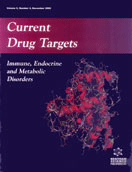Abstract
Transcription of the integrated HIV-1 proviral genome is an essential step in the retrovirus life cycle and thus an appealing target for chemotherapeutic intervention to restrict retroviral replication. A fundamental role in this process is exerted by the viral protein Tat, a powerful transactivator of viral gene expression. This protein binds a structured RNA sequence at the 5-ends of all nascent viral mRNAs and promotes transcription by mediating the recruitment to the viral promoter of cellular factors required for chromatin remodelling and transcriptional processivity. In addition to these transcriptional activities, Tat is released from the cells and enters neighbouring cells when present in the extracellular environment, a process that is possibly involved in HIV disease pathogenesis. Given its pleiotropic functions, the protein represents a highly appealing target for drug development. Here I will summarise the known molecular mechanisms by which Tat exerts its activities and review the currently available compounds that interfere with the process of transcriptional activation of the HIV-1 provirus.XXX YYYZZZ
Keywords: chromatin, gene expression, p-tefb, p300/cbp, transactivation
 2
2


















